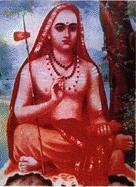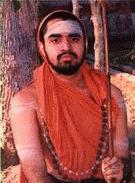 sivananda-ashram
sivananda-ashram sivananda-ashram
sivananda-ashram





NARADA
For instance, some one asked him why he was continuing to recite the name of Lord even though he had access to Kailasha and Vaikunta the heavenly abodes of Siva and Vishnu and he had won the Grace of Lord in full measure. Narada replied,
"What greater Anandam (Bliss) can I have. When the heart beats to the tune of Ram nam, that is heaven, indeed."Narada who was proficient in all the scriptures and every field of knowledge was once suffering from a restless mind. He went to the sage Sanatkumara and asked him,
"Oh sage! Why do I have no peace of mind? Please remove this malaise and impart to me the knowledge to retain mental tranquility." Sanatkumara asked Narada what all he had acquired to entitle him to seek this knowledge. Narada replied that he had mastered the 64 kinds of knowledge, studied the six shastras and learnt the four vedas and their subsidiary sections. After listening to Narada, Sanatkumar told him that all the knowledge he had acquired was only a mass of words. The sage explained to him that beyond all this scriptural and other knowledge was something transcendental. Narada was surprised to note that all his vast knowledge had been devalued. Sanatkumara said, "Above the power of Words is the power of Speech (Vaak). Above the Speech is the Mind. Greater than the Mind is the Will (Sankalpa). Higher than the Will is the Chitta (Awareness). Greater than the Chitta is Dhyana (meditation). Greater than Dhyana is Jnana. Greater than Jnana is Water. Greater than Water is Thejas. Higher than this is Prana (the life-force). It is only when you understand the principle of the Life-force (prana), you will understand the truth of the aphorism Tat-Twam-Asi "Then Narayana said,
"Although I am great, I am confined in the heart of my devotees. So the devotees are greater than Myself. Therefore, wherever my devotees sing my name, I am there."Narada enacted the entire scene to demonstrate to Sathyabhama what glorious qualities Rukmini possessed and the greatness of her devotion. He told Sathyabhama,
"the Lord will not succumb to wealth. He will yield only to goodness". Rukmini was a supremely good woman. We have to follow her example.Sage Vyasa and Narada are like man and God. Narada taught Vyasa that all the texts and scriptures do not contain the praise of the leelas of the Lord. They are hollow and have no life in them. He told that from that day Vyasa would have the capacity to sing the glory of the Lord. Singing of a Bhajan is usually associated with singing with a rhythm. All types of tunes have their origin in Sama Veda. Because Narada removed all the doubts from the mind of Vyasa, Narada was taken as Guru and that day has been referred to as Guru Poornima. As the role of the Guru is to remove darkness i.e., ignorance from the dark minds, it is also referred to as the emerging of Pournami and brightness.
Narada took the position of a Guru and used Vyasa to explain the function of a Guru and so in this context, it is referred to as Vyasa Poornima. Narada was the son of a servant woman who was working in a house where the Vedas were being continuously recited. In order to celebrate the four months of rainy season the house holder of the house where Narada’s mother was working invited a large number of rishis. She was given the task of attending to the needs of the guests in that house. At that time Narada was only six years old. Sitting with the rishis, he was concentrating with a single pointed devotion on Vedas that were being recited. After the celebration was completed, the rishis were preparing to depart to their ashrams. Narada was desiring to go with them. But looking at his age, the rishis did not take him but taught some mantras which Narada learnt. One day Narada’s mother was bitten by a cobra and she died instantly. He saw the struggle his mother underwent. But he was not moved by it. He was detached. He left for the forest. He felt tired. He heard a voice asking him to leave his personal ‘I’. After listening to this Divine voice, Narada went and sat under a tree. He contemplated on ‘S
oham’ which means giving out and taking in of the breath as an aspect of God. Although Narada had no complete knowledge of the Vedas, he regarded the taking in of breath as the aspect of Sama Veda and the giving out of breath as that of Rig Veda.In this manner, while he was practicing what was prescribed in the Vedas, he came to the end of his life. The breathing stopped and he merged with the eternal. Narada then acquired a new life form. Our Puranas tell us that Narada used a tambura and moved about in the universe singing the glory of the Lord. This is only symbolic and we should regard Narada as taking the spinal column as representing veena, the nerves or the nadis as the strings and the breathing in and out as Harinama Smarana.
 Thanks to saivani
Thanks to saivani
THANKS TO SAIVANI FOR THERE LESSONS TO THIS PAGE FOR CHILDREN